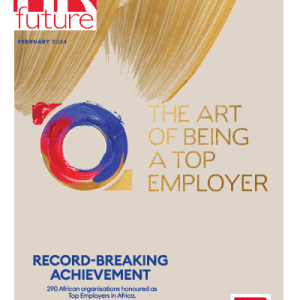Deborah Kuness shares ideas with Alan Hosking on how to reduce employee burnout in the workplace.
What exactly is burnout?
The World Health Organization (WHO) classify burnout as a mental condition; and it’s perhaps best described as a combination of fatigue and exhaustion.
The condition is neatly set out in the job demands resources model of work engagement (JDR). This explains that burnout occurs when the job demands exceed an employee’s resource capability and is characterised by cynicism and exhaustion. Without enough resources available, job demands may develop into job stressors. And that’s the catalyst for burnout, with probable outcomes including physical illness and absenteeism and, ultimately, higher staff turnover.
What’s causing burnout?
The pace of workplace change has of late been unrelenting. Fuelled by a tech revolution, much of the change has been positive and progressive as far as the employee experience is concerned. It has brought huge efficiencies and given workers unprecedented flexibility over when and where they work.
But with this evolution of the workplace has come different pressures for workers and, in turn, a surge in employee burnout. And this is, of course, damaging both individually and collectively for employees and organisations. So, as this is an issue that isn’t going away any time soon, swift action is needed to tackle it.
How big a problem is burnout?
Employees’ health and wellbeing is coming under increasing scrutiny. And it’s easy to see why; poor worker wellbeing is now classed a global epidemic.
A recent study by Gallup reported that two-thirds of workers faced burnout in 2018 with further research in the US also revealing that workplace stress contributes to over 120,000 deaths per year and costs up to $190 billion in health care. Meanwhile, global corporate spending on workplace wellbeing initiatives has exploded and reportedly now stands at $50 billion every year.
Who or what is to blame for employees burning out?
The first myth to bust is that burnout is an organisational rather than individual problem, as demonstrated by the JDR model. It is not. Naturally, some people cope better or worse with stress or have higher or lower resilience. But the inescapable truth is that burnout is pretty much inevitable in any environment (organisation) where demands are high and resources are low.
Consider that employee engagement and burnout are at endpoints of a continuum, but are separate, independent states. The more resources available, the more likely you are to have an engaged workforce. However, the higher the demands (and the lower the resources), the closer your workforce is to burnout. Our benchmark data reveals that 69% of employees believe their organisation cares about their wellbeing but only 60% believe that their workload is fair and reasonable. The latter figure in particular should perhaps be taken as an early warning flag for burnout.
What impact does burnout have in the workplace?
More cases of employee burnout equal more health problems. The end result is higher rates of absenteeism, which adds even greater demands on other workers at a time when many organisations are already pretty lean in staff numbers. The knock-on effect here is higher employee churn, which is a real drain on revenue thanks to the added costs of resourcing and training new employees. Meanwhile, other employees are expected to ‘pick up the slack’ in the interim period, when people leave or new starters are being onboarded. This only heightens the risk of disengagement and burnout, and so the damaging cycle continues …
How can you prevent burnout in your organisation?
The good news is that there are a number of actions you can take to mitigate the risk of employee burnout in your organisation. We’ve picked out five to start with:
- Job control – empower your employees more by giving them decision-making authority and greater autonomy. Take stock of the current levels of trust in your organisation and the behaviours that contribute to creating a culture of high trust;
- Provide clear job expectations – ensure that you give clear guidance on the scope of each and every role;
- Balance demands and resources – spend time working with your people to understand their current job demands versus available resources to ensure what is expected of them is fair and realistic;
- Communicate – provide timely feedback to your employees, recognising and rewarding good work and offering guidance or further training if performance dips; and
- Be supportive – offer emotional support to employees, where needed, by being transparent and approachable and actively encourage a healthy work/life balance.
Deborah Kuness is a Principal Consultant Psychologist at leading people consultancy ETS London. She has a Master of Science degree from the University of Central Lancaster.






















